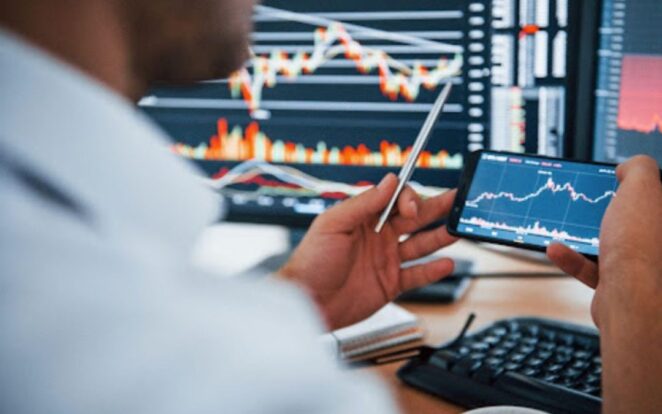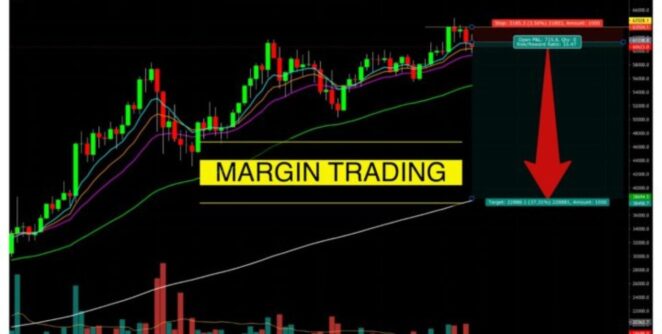When beginning a trading journey, one of the most important decisions is determining how much capital to allocate. The answer is not a one-size-fits-all solution, as it depends on personal risk tolerance, market knowledge, and financial goals. For new traders, the focus should be on preserving capital while gradually growing it.
Key Points:
- Assess your risk tolerance before deciding on capital allocation.
- Beginners should prioritize capital preservation.
- Start small and increase investments over time.
- Focus on education and building trading skills.
Starting Small and Gradual Growth

For anyone unfamiliar with trading, it is wise to begin with smaller amounts. A common strategy involves investing no more than 1% to 2% of one’s capital on a single trade. This limits exposure to risk while providing enough opportunity for growth.
New traders should avoid overextending themselves by investing large sums early. Instead, a gradual approach allows for learning and refining trading strategies without significant losses.
New traders can benefit from platforms like Binomo, which allow them to start with minimal amounts. All you need to test your trading strategies with a $10,000 demo account is Binomo login. Their users can practice trading without risking real capital. Such tools are essential in developing discipline and building confidence.
Risk Tolerance: The Foundation of Decision-Making
Risk tolerance varies significantly from one person to another. It is crucial to evaluate personal financial standing before deciding on the amount of money to allocate toward trading. For those new to investing, the ideal approach is to consider capital that they can afford to lose.
Allocating money that will not impact financial stability is essential for reducing emotional stress, which often leads to poor trading decisions.
Someone with a low tolerance for risk should limit exposure. For instance, they could begin with $100 or less in the market. As their knowledge and confidence grow, gradually increasing this amount becomes more feasible. For those with higher risk tolerance and a deeper understanding of markets, higher initial investments may be more suitable.
Education as an Investment
Investing in education before entering the market can prevent many costly mistakes. Even experienced traders dedicate time to learning and improving their skills. New traders should prioritize building their market knowledge through courses, books, and tutorials.
Many online platforms provide free resources, allowing new entrants to familiarize themselves with market trends and technical analysis.
Trading requires continuous learning. Therefore, budgeting for educational materials is essential. Whether it’s paid mentorship, online courses, or industry-specific books, allocating a portion of funds to knowledge pays off over time.
Allocating Funds Based on Goals

A trader focused on short-term gains may be willing to risk more capital than someone looking for long-term growth. The key is aligning the amount invested with the intended outcome.
For instance, a day trader seeking quick profits may allocate a larger portion of their funds for frequent trades. On the other hand, someone interested in long-term success may start with smaller amounts, focusing on safer investments and gradually building a portfolio.
Diversification Minimizes Risk
One of the key principles of investing is diversification. Spreading capital across different assets minimizes the risk of significant losses. Instead of investing everything in a single trade or asset, a diversified portfolio ensures that a loss in one area does not wipe out the entire capital. For beginners, this approach ensures a more balanced trading experience.
For example, a beginner might allocate their funds across different sectors or types of assets, such as stocks, commodities, and forex. This way, they can test different strategies and find what suits them best without risking all their capital in one area.
Knowing When to Increase Investments
The temptation to invest more once a few profitable trades are made is natural. However, restraint is critical at this stage. Increasing capital should only happen once a consistent track record of profitable trades has been established. Even experienced traders recommend waiting until confidence in one’s system and strategies is proven.
It is best to revisit financial goals periodically and adjust the trading plan based on results. Overconfidence can lead to excessive risk-taking, which often ends in losses. Incremental growth, paired with disciplined trading, is key to success.
Avoid Using Margin or Leverage Early On

While margin and leverage can amplify profits, they can also magnify losses. New traders should avoid borrowing money to trade until they have a firm grasp on the markets and have built experience. Leverage can be dangerous for inexperienced traders, leading to significant losses if a trade goes against them.
It is better to rely solely on personal capital when starting, as this reduces risk. Once proficiency has been proven, more complex strategies involving leverage can be explored, but only with caution.
Begin with Caution and Invest in Knowledge
The key to a successful trading journey lies in careful planning and risk management. New traders should begin by investing small amounts of capital, focusing on learning the markets and developing strategies. The path to success is gradual, and rushing the process can lead to avoidable losses.
Starting small allows traders to test different strategies without significant financial pressure. Most importantly, dedicating resources to education and continuous learning will prove to be the best investment in the long run. The road is as much about building skills as it is about growing capital!



